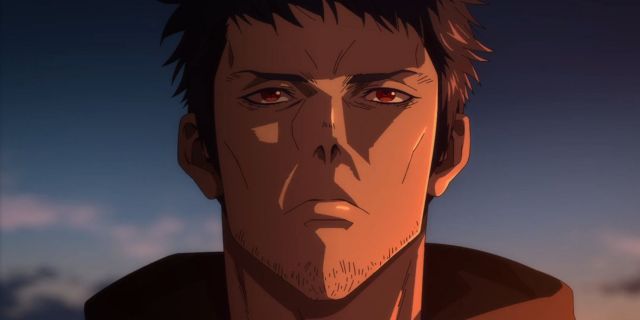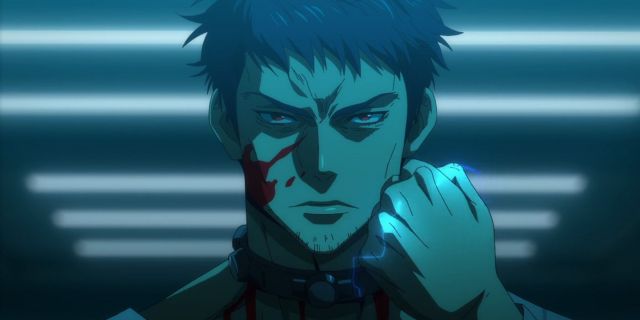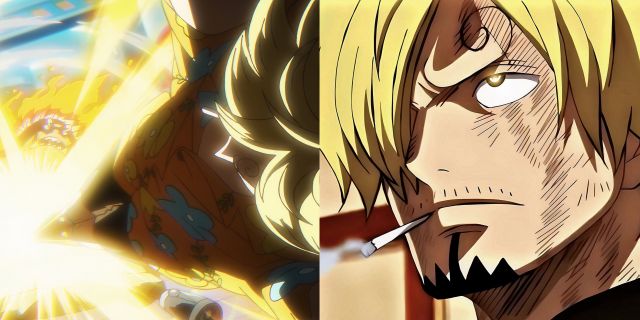Highlights
- Ninja Kamui starts strong with a unique premise that takes unexpected turns, but loses its ninja focus along the way.
- The action-packed series fails to deliver on its promise of intense martial arts action, relying too much on CGI.
- Despite an intriguing start and potential for a thrilling revenge story, Ninja Kamui falls short in execution and character development.
|
Show Title |
Ninja Kamui |
|
Director |
Sunghoo Park |
|
Studio |
E&H Production |
|
Premiere Date |
2/10/2024 |
Toonami has always been cool, but what makes it cool has progressively been supplanted by an idea of what the famed programming block is – one that’s only become more niche in the streaming age. That idea is absolutely worth preserving, but when creators attempt to capture the aesthetic of a “Toonami anime” by force, it can too easily produce a lifeless pastiche; enter, Ninja Kamui.
Ninja Kamui comes from director Sunghoo Park (Jujutsu Kaisen, Jujutsu Kaisen 0), character designer Takashi Okazaki (Afro Samurai), and writer Shigeru Murakoshi (Zombieland Saga). It is an action revenge tale following an exiled ninja whose former clan catches up with him and murders his family, leaving him for dead until his mysterious resurrection sets him on a warpath.
The Promise versus the Premise
It’s barely worth the time to point out how generic the premise is, not only because it would feel redundant, but more importantly, because no one interested in the show cared about that. Even the most tired and clichéd concept can be great if executed properly, and based on Park’s past work, people had good reason to be excited. People were won over by the promise of Jujutsu Kaisen‘s martial arts action taken to bloody extremes as a love letter to the ninja fantasy.
Surely, the series had to be more than just a generic action show with Park and his new studio attached, especially after they’d released that One Piece spinoff OVA, Monsters, a month prior. To its credit, Ninja Kamui most certainly did not go the way anyone expected it to, but only because it seemed to lose sight of what drew people to it in the first place.
A Stupidly Intriguing Start
Higan and Mari are former ninjas who left their organization after a radical change in leadership, and who live in the American countryside with their son Ren. When other exiles start getting picked off, time seems to be running out, and sure enough, the family is attacked and killed. Then, Higan wakes up in the morgue – decidedly not dead, which puts him on the radar of FBI agents Mike Moriss and Emma Samanda, who are very curious about these mysterious murders.
Higan sheds his disguise and begins a quest to eradicate his former ninja clan but soon discovers they’re working with the megacorporation Auza. This forces him to work with Mike and Emma to figure out what they’re planning and put a stop to it. If a story about a ninja working with FBI agents to fight other ninjas who are colluding with the anime equivalent of Amazon to take over America’s power grid sounds fun, it’s because it is. It’s utterly ridiculous in the best way.
How Ninja Kamui Betrays Its Promise/Premise
That gradually building insanity is the most consistent hook the show has to offer, mostly because so much of the execution beyond that is woefully inconsistent. The clearest example of this is how the action is animated and directed throughout the show. For the first few episodes, Ninja Kamui, while not excellent, did deliver on what it promised; frenetic and chaotic action with a plethora of ninja abilities and tools to keep things fresh.
After Episode 3, we compared it to the likes of Ninja Scroll with its roundtable of colorful villains, each with the potential to present Higan with a unique threat. But after Episode 5, the entire show shifts gears in a rather baffling way. The main antagonists all don advanced combat suits called Gusoku Gears, all animated in CGI in contrast to the hand-drawn animation that was already starting to decline in quality after the premiere.
The Moment Ninja Kamui Abandoned the “Ninja”
Far from being an isolated departure from the norm, the entire philosophy behind the show’s action is overwritten in an instant. Higan gets his own Gusoku Gear and suddenly, any meaningful trace of a “ninja” fantasy is erased from the series, no matter how many times the word is inaccurately uttered. There are no ninja tools, no vaguely supernatural ninjutsu, nor even blatantly supernatural ninjutsu – just sci-fi robotics with very little of Sunghoo Park’s style shining through.
For several episodes, the viewer is left with something that’s not just of a lower quality, but practically a different genre. Worse yet, Episode 11 almost gives the impression that the show will recover, before going right back to poorly-animated CGI for the last two. It can’t be stressed enough that CGI is NOT the issue – the real problem is poor implementation that goes against what the show was marketed as.
This inconsistent presentation, whether the result of poor scheduling or a cluttered creative conception, ends up hindering every other part of the show, notably the characters and themes. When every part of the story is centered around the idea of being a ninja, then the lack of actual ninjas isn’t just an anchor holding the ship back – it’s an iceberg actively sinking it.
The Point of Ninja Kamui

Ninja Kamui is trying to be a story not just about death, but resurrection – both literal and, more importantly, figurative. Namely, Higan’s quest for revenge turns into a fight for something bigger as he rejects the code that previously chained him. This is supposed to be a result of his relationship with the supporting cast, but Higan’s interactions with them never amounted to anything meaningful, because he’s simply dull.
Furthermore, without getting to feel like a real ninja during the action scenes, he lost his one outlet through which to be more than just a boring protagonist. Meanwhile, the supporting cast can be pretty entertaining, especially Mike and Emma, whose relationship is the most fleshed out and whose individual stories are by far the most engaging. Given the surrounding narrative, that might not say much, but the difference is that they at least tried.
The Lesson to Be Learned from This Show
When Ninja Kamui was first airing, there was this sentiment thrown around, one which we at Game Rant shared, that it was the “perfect show for Toonami.” This take seemed to be based on vibes alone, divorced from the quality of the work itself, and maybe it’s just hindsight being 20/20, but that might have been a bit disrespectful to what makes Toonami special.
Toonami was never cool because the shows featured were made for it. Save for the second season of The Big O, they weren’t. It was cool because it was the only place on TV to watch Cowboy Bebop, Rurouni Kenshin, or any number of cool shows that a teenager might otherwise never hear about. Toonami was an aesthetic experience unique to the era of TV before streaming and its continued existence is a blessing that should be celebrated every weekend when it comes on.
For that very reason, Ninja Kamui is particularly lifeless because it is so clearly designed – at least in part – to cater to the Toonami generation. Unfortunately, its ideas are too cluttered, which leads to the talents of its creators feeling wasted on a story that too often forgets why the viewer is there in the first place. It didn’t have to be brilliant to be good, but it could hardly manage to be dumb fun either, and that was the killing blow.
Score: 2 out of 5











Leave a Reply